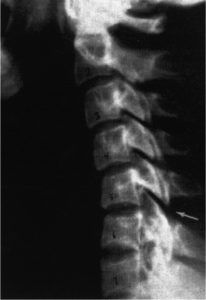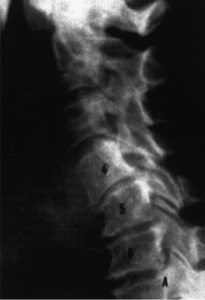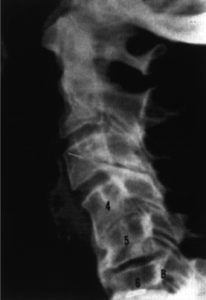Phases of Spinal Degeneration
Embracing Aging with Vitality
Navigating the Phases of Spinal Degeneration
Aging is a natural and beautiful part of life. Unfortunately, in America aging has become associated with loss of function, decreased energy, and increased drug dependency. The truth is that while aging is unavoidable, chronic illness and premature degeneration are not.
Chronic pain, loss of joint function, low energy, and loss of mental faculties may be common in America, but they are never normal. We are designed as human beings to live long, healthy lives full of energy and vitality from birth until death.
Life is stressful. Physical, chemical, and emotional stressors are part of daily life. Thankfully, our bodies are resilient and able to adapt to these stressors, allowing us the ability to handle these challenges while enjoying and succeeding in life.
Our adaptive ability determines our longevity and the quality of our lives, and our nervous systems ultimately coordinate all of our adaptive effort.
As the most delicate and most important system in our bodies, the brain and spinal cord are fully encased in a bony tunnel called the spinal column. The spinal column houses and protects the nervous system, and also allows for upright posture and range of motion. This column is made up of 24 individual vertebral bones.
Modern science has been able to determine that as long as these bones are well-aligned, and as long as the spinal joints move freely through their ranges of motion, the brainstem and spinal cord are well-protected and function optimally.
The daily stressors of life can cause a situation in which the bones of the spine become misaligned, and joints become limited in their range of motion. This spinal functional imbalance leads to interference in the communication pathways between the brain and body. This condition of neurological imbalance and interference is known as “vertebral subluxation.”
The effects of subluxation are as varied and numerous as the extent of the nervous system itself. All parts of the body may be affected. Resistance to disease development is weakened. Any symptom or health condition may be caused by or worsened by nerve interference. What’s more, joints that cannot move properly deteriorate over time. This leads to several progressive phases of spinal degeneration.
This can be thought of as spinal decay, in the same way we think of tooth decay. With proper care over a lifetime, both tooth decay and spinal decay are preventable. Premature degeneration of the spine and nervous system can be avoided through corrective chiropractic care, and just as with our teeth, the sooner we begin caring for our spines and nervous systems, the better.
Our Goal for Tacking Spinal Degeneration
Our goal is to provide the care and guidance that will allow you to correct and prevent the root cause of health dysfunction and premature degeneration.
We know that by taking the time and making the effort to care for our spines today, we have the greatest chance of a beautiful, productive, and joy-filled tomorrow.
We’re on a mission to serve Fort Wayne with the highest level of principled chiropractic care and a focus on optimal health.
Phase ONE Spinal Degeneration
The first phase of spinal degeneration is defined by abnormal spinal alignment and range of motion. Nerves, discs, and joints begin to deteriorate prematurely. The spine and nervous system are continually and progressively stressed.
Nerve interference begins immediately, and the body is unable to function and heal at its peak. Rarely is this phase accompanied by the presence of any major pain or symptom.
At this point, chances are best that with proper chiropractic care, ideal spinal biomechanics and nervous system function may be restored.

PHASE ONE
Phase TWO Spinal Degeneration
The second phase of spinal degeneration is characterized by narrowing of the spinal discs, known as “disc disease,” and by deformation of the bones, called “spinal arthritis.” Posture may be markedly imbalanced in this phase, with rolled shoulders, pelvic unleveling, and forward head posture.
With chronic abnormal spinal cord tension, and as spinal openings become narrowed, significant symptoms often present themselves in this phase. Aches, pain, numbness or tingling, and general fatigue are common. Though full spinal and nervous system function may not be restorable in this phase, substantial improvement is possible with proper care.

PHASE TWO
Phase THREE Spinal Degeneration
During the third phase, spinal deterioration has progressed to a point where there may be permanent damage to the discs and joints. Abnormal spinal curvature may be present.
Functional interference may have developed to a point of mental and physical impairment. While spinal decay has worsened, chiropractic care can still slow down the degenerative process and provide massive benefit regarding increased quality of life through functional improvement.

PHASE THREE
Phase FOUR Spinal Degeneration
In the final stage of subluxation degeneration, much of the physical damage to the discs, joints, and bone may be irreversible. Extensive scar tissue and nerve damage may be present.
Many notice their quality of life has decreased substantially. Total restoration of spine and nervous system function is impossible.
However, properly applied corrective chiropractic care can still provide relief, and dramatically improve overall nerve and bodily function over time.

PHASE FOUR
Schedule a Consultation Today
It is never too early or too late to begin taking care of our spines. Spinal degeneration, chronic pain, and disease can all be prevented through care of the nervous system and healthy lifestyle. Reach out today for a consultation to learn more about principled chiropractic care at Pine Valley Chiropractic.
We are here to support and care for you and your family, and we encourage you to learn more. Choose us as your Fort Wayne chiropractors, as we lift our community to true health and well-being, one family at a time.

